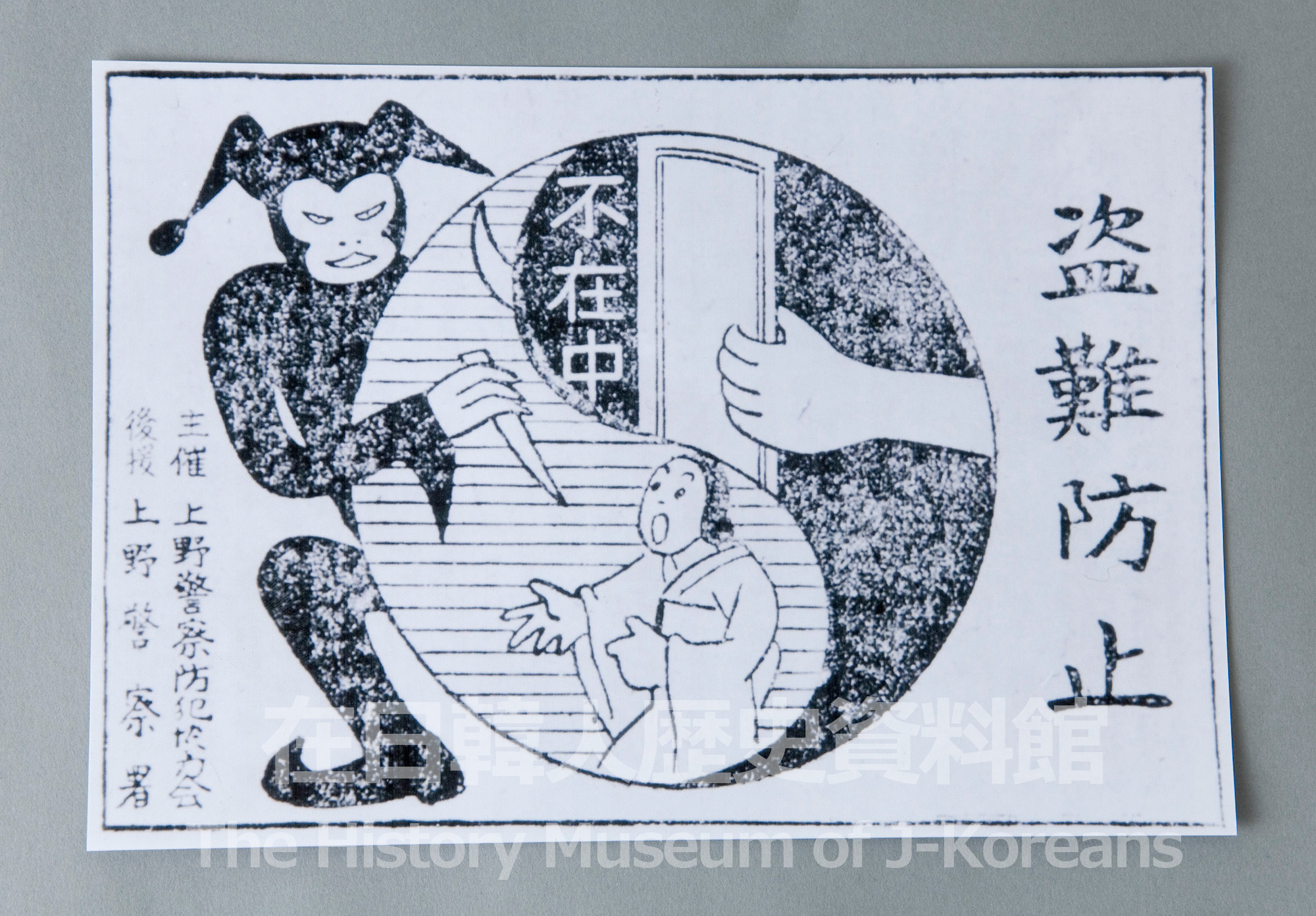Discrimination and Antiforeignism in a Crime Prevention Poster
In this poster, the Taegukgi (the flag of Korea) was used as the background against which a robber, armed with a knife, threatens a trembling woman. The poster was introduced by Prof. Kyong-sik Pak in his book Kaihōgo zainichi Chōsenjin-shi (History of Zainichi Koreans after Liberation) (San’ichi shobō, 1989). We can see from the information on the poster that it was officially endorsed by the Ueno Police for the purpose of a “theft prevention month” organized by a neighborhood association cooperating with the Ueno Police. It was posted in many places within the Ueno Police’s precincts.
In this case, the date was October 1946 and the place was Ueno. However, it is probable that similar posters were posted in areas with large Korean populations, such as Osaka, Kobe, and Fukuoka.
There are many methods to denigrate others. In this case, it is the association of Koreans with criminality. The fact that the Japanese imperial state continuously used Korea as a stepping-stone for its own development gave rise to a warped view of Koreans. The Korean masses fought hard against Japanese rule. There were many victims. It is well-known that the fierceness of these protests gave rise to the perception of “malcontented” (futei) Koreans. The exclusion of Zainichi Koreans from the democratic rights that Japanese people enjoy was also based on this perception.
This single poster speaks to the reality of the new forms of discrimination and exclusion from “democratic” Japanese society that our parents and grandparents experienced.
